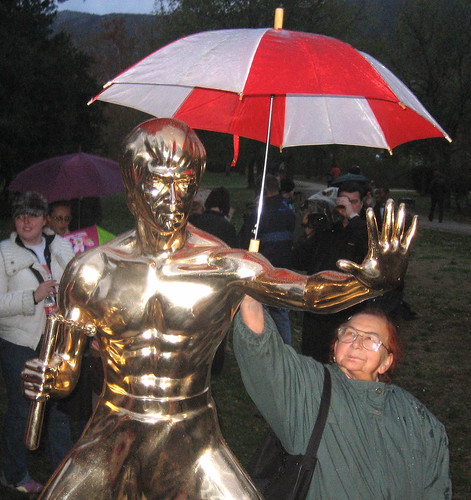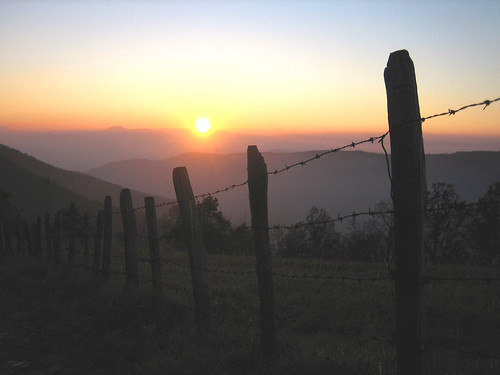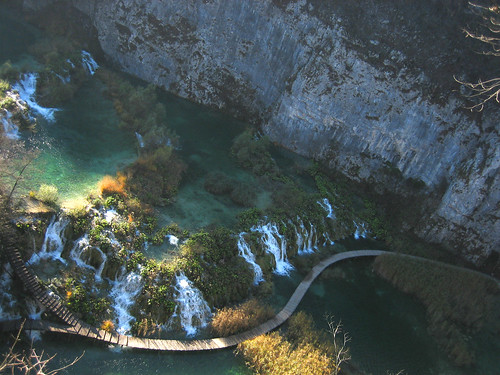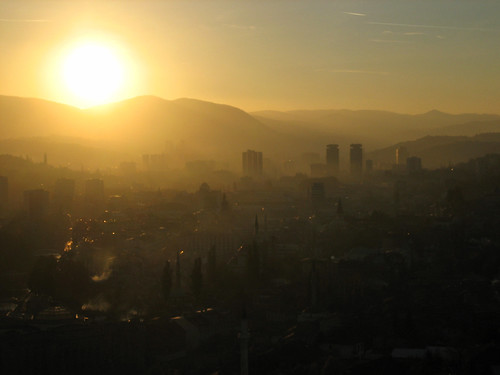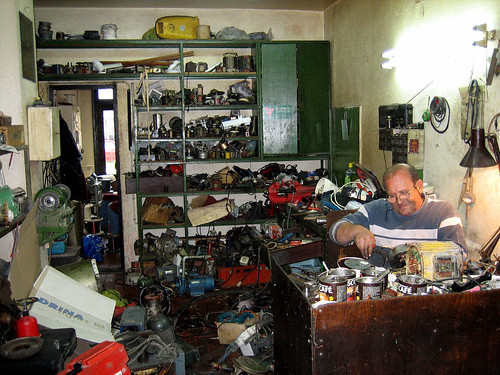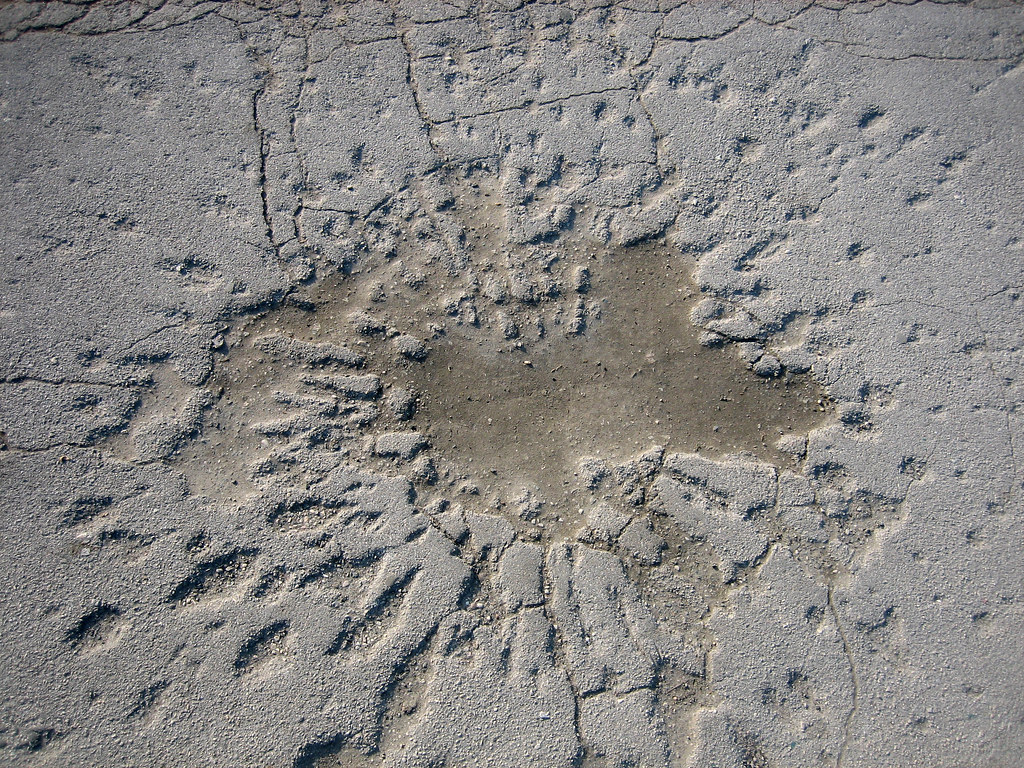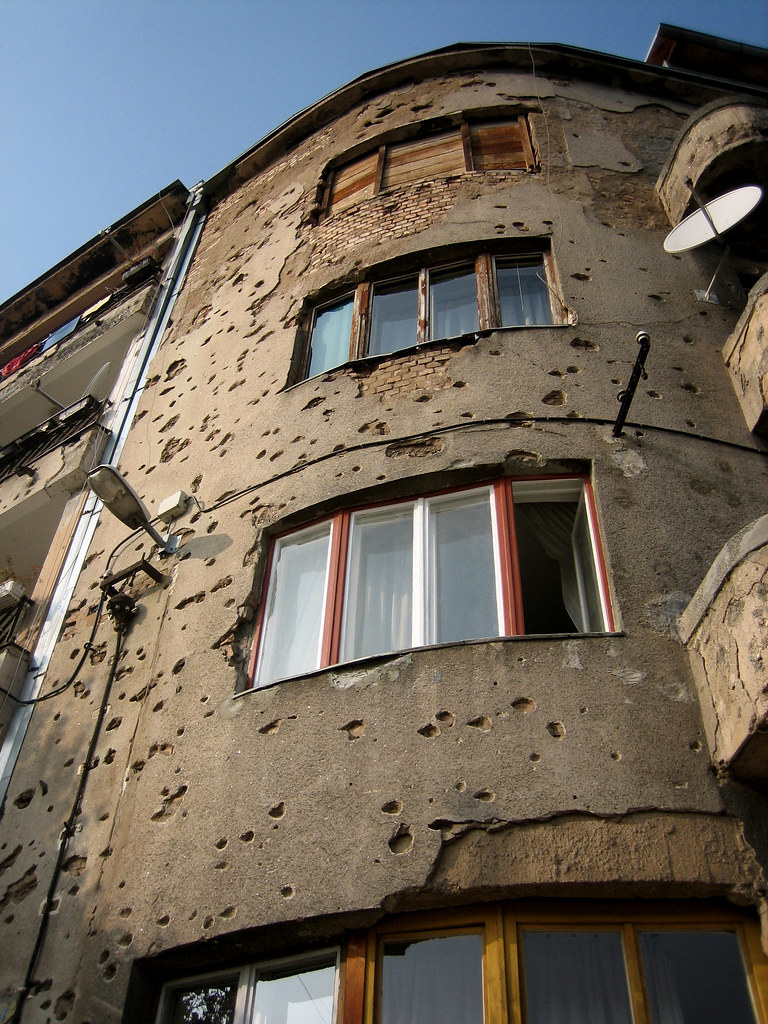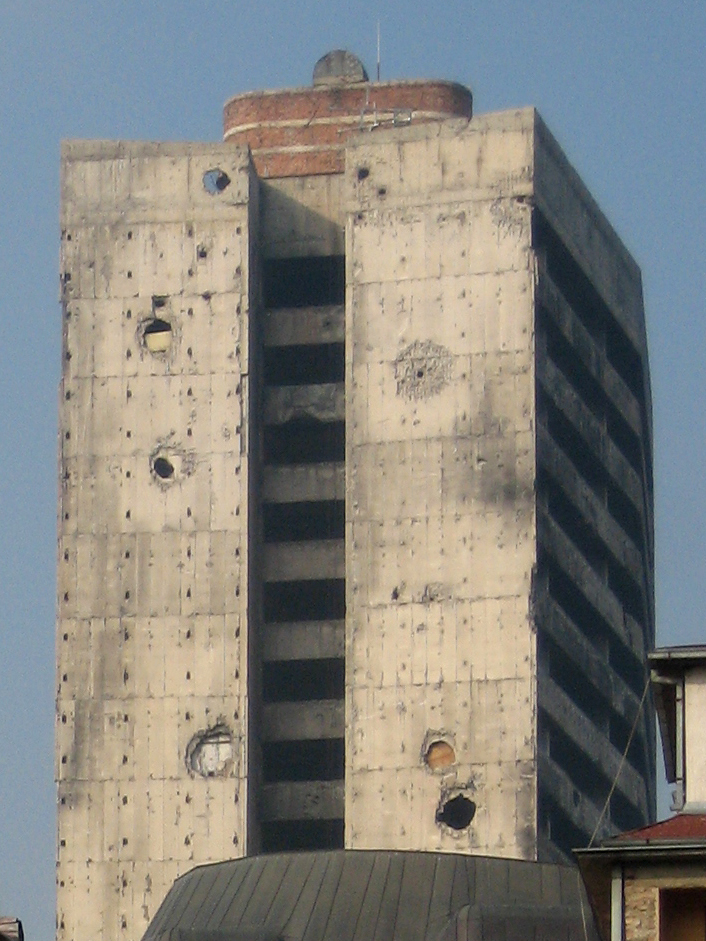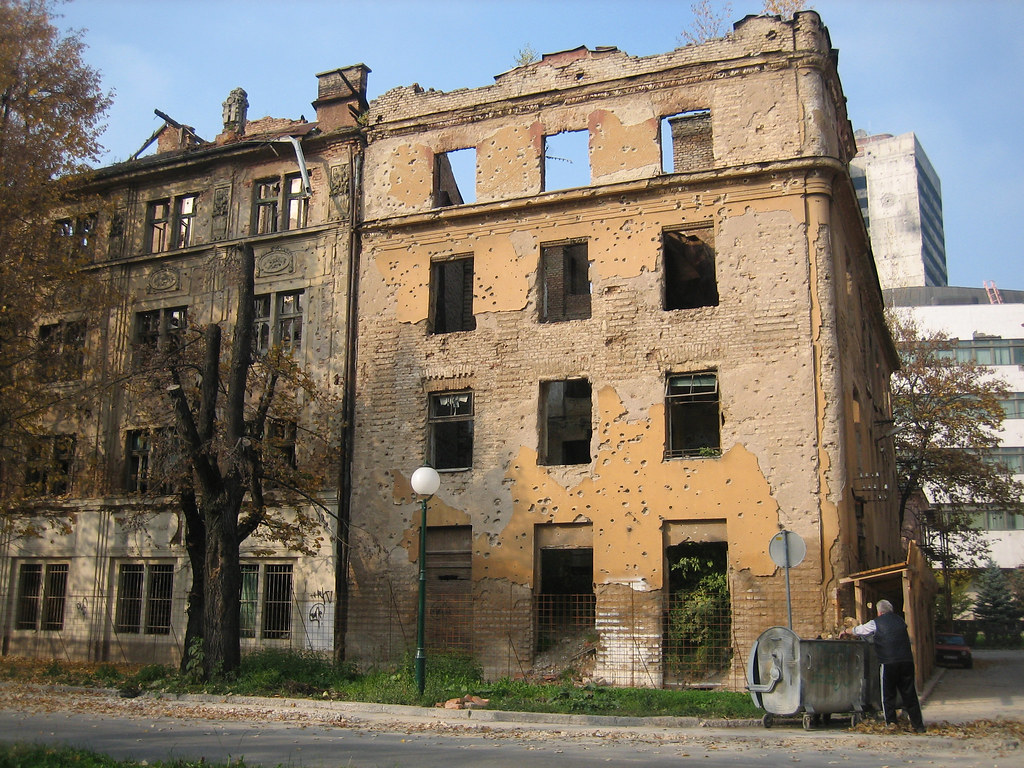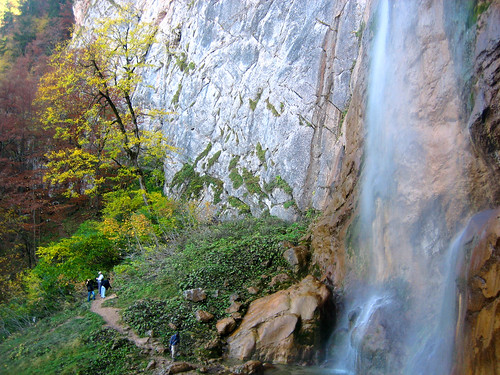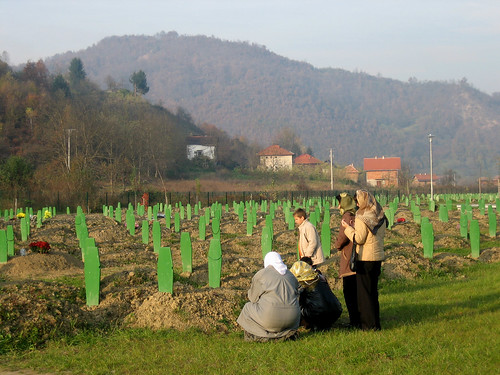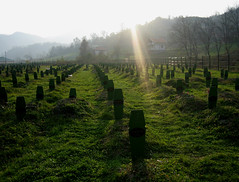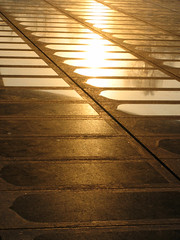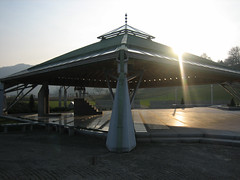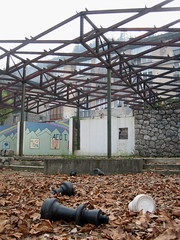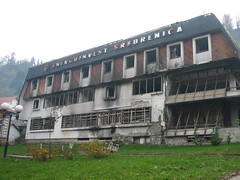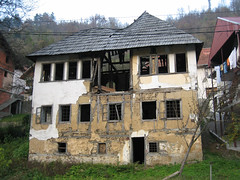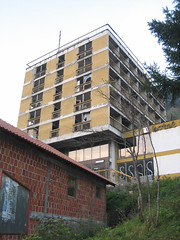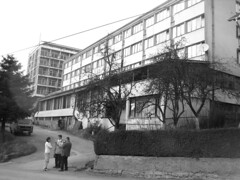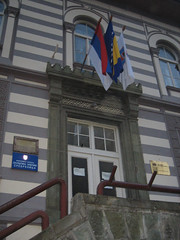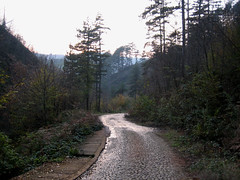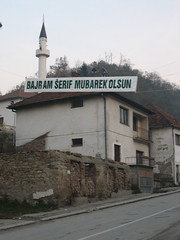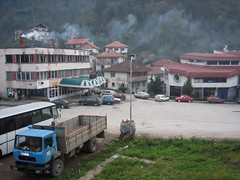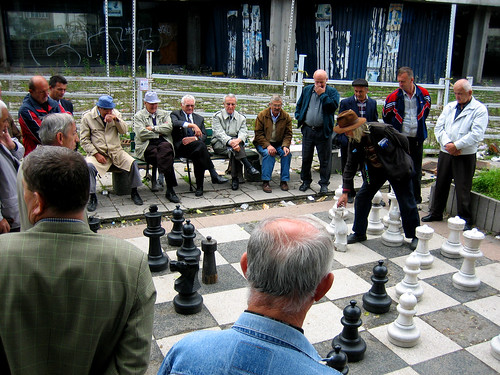Bruce Lee, uniter of divided Bosnia
The story goes that young activists on both sides of divided Mostar decided to bring old Croat and Muslim enemies together with a unity monument in the city centre. After much debate, the only thing they found that they had in common was an unabashed devotion to kung fu hero Bruce Lee.
I had heard about plans for the statue before coming here, and last week I read in the newspaper that the official unveiling would be on Saturday. A couple of friends and I decided that the event was unmissable, not only for its comedic value, but also because it was an historic, once-in-a-lifetime opportunity. Saturday, November 26, marked the unveiling of the first ever Bruce Lee statue in the world -- in Mostar, Bosnia. The second statue was unveiled on November 27 in Hong Kong to mark Bruce's would-be 65th birthday.
The first Bruce Lee statue in the world... in Bosnia??!! How could we not go? So on early Saturday morning we hopped in the car and headed south. I began to worry when we got caught in a traffic jam on part of the only 12 kilometres of four-lane highway in the entire country. But in the end we made it with enough time to first take a quick look at Mostar's UNESCO heritage site: the rebuilt, historic sloping bridge which unites the Croat and Muslim sides of town. The destruction of that bridge during the war was seen as emblematic of the disintegration of centuries-old multiethnic harmony in Yugoslavia.
When we arrived at the city park, a crowd of some 300-odd people had already gathered, mostly young Muslims and Croats. In the middle of the crowd stood the statue covered with a white sheet and protected by Bosnians clad in orange kung-fu suits, presumably Bruce Lee disciples. I had read that there had been some controversy as to whether to point Bruce east (towards Muslims) or west (towards Croats) with his offensive stance, but eventually they had settled on north, presumably where there is no one to offend (although the Serbian Republic is north... hmm).
The air was thick with anticipation. TV cameras and lights hummed; shutters clicked. At one point, a man who had climbed up a tree to get a better view came crashing down with a loud crack, the branch striking me on the shoulder. The crowd laughed uproariously and the uninjured, blushing fool took a bow.
Curiously, the ceremonies began with extensive martial arts demonstrations. Bruce Lee followers from around Bosnia had shown up to demonstrate the wicked moves and devastating attacks their hero had pioneered. We saw sword-fighting, staff jousting, flying kicks, flips, and plenty of kung fu screeching. At one point, the evident sensai of the group, who had been sitting on his lawnchair throne for most of the performance, finally got up and demonstrated how one could disarm a handgun-toting opponent by having one of his pupils hold a gun to his head, back and then chest.
I began to wonder whether this was all a joke, and it seemed the crowd agreed. There was plenty of chattering, raised eyebrows and laughter. A couple of 12 year-old kids continuously yelled apparently hilarious taunts from up in a tree. And then came the politicians. A gray-haired man gave a long winded speech no one could understand because he neglected to speak closely enough to the microphone. Then the Chinese ambassador took the stage, prattled on in a quiet voice in seemingly broken Bosnian, and was received with polite applause.
And then finally the main event! The organizer of the whole thing, a young Croat named Veselin Gatalo, got up and gave a rousing speech. I later found out he said: "This does not mean that Bruce Lee will unite us, because people are different and cannot be united and we will always be Muslims, Serbs, or Croats," Gatalo said. "But one thing we all have in common is Bruce Lee!" An article in today's newspaper reported: "(Gatalo) said Lee - a hero to Bosnian young people in the 1970s and ’80s - epitomized justice, mastery, and honesty, virtues the town had badly missed."
Gatalo then walked to the statue and, as the applause mounted and the crowd whistled, he slowly pulled off the sheet to reveal... a shiny gold, polished Bruce Lee! Bruce was holding nunchucks in his right hand and had his left outstretched in an offensive stance. The inscription at the base said only: "Bruce Lee 1940-1973. Your Mostar."
Just at this moment, the rain began to pour down. Nevertheless the crowd rushed in -- everyone wanted a picture with the man himself. An old lady stoically held an umbrella over Bruce's head. Eventually the mob dispelled and we headed back to Sarajevo, chuckling all the way.
Looking back, this was truly one of those events where I can say that I don't know whether to laugh or to cry.
A sad footnote: the newspaper mentioned today that on Saturday night the Bruce Lee statue was vandalized -- apparently his nunchucks were stolen. Wine bottles were found littered around the park. I am flabbergasted. How could they defile something so pure and so good?
See some more photos from the unveiling.
